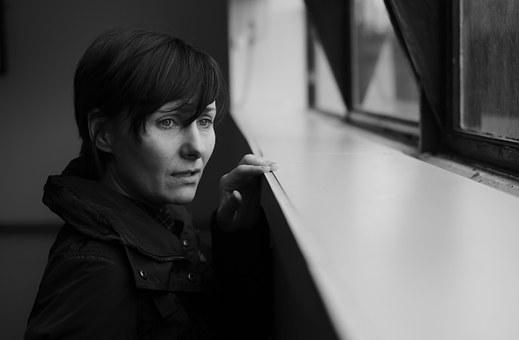
Ah, Winter...
Life naturally slows down in winter. The days grow shorter, light becomes scarce, and we respond by planting ourselves in front of the television or hiding under the covers to stay warm. The cold weather tends to keep us inside and out of the daylight. Even if we are regularly active, we are at the mercy of winter storms until springtime.
Everyone, from time to time, experiences an episode of the winter Blahs, and for many of us these “down times” seem to happen more often during the long winter months. This is such a common state, that there is a designated diagnosis of Seasonal Affective Disorder (SAD), a type of depression that sets in during the shorter days of fall and winter and lasts until spring.
It is important to remember that depression is a spectrum, and the difference between a bout of the winter Blahs, SAD, and a major depressive disorder is the type, duration, and the severity of the depressive symptoms.
The Blahs
The winter Blahs hit everyone at some point. It seems like it’s dark most of the time, we are stuck indoors, and we begin to feel a little down. The winter Blahs are short and very mild episodes of sadness, often without any other symptoms. The Blahs last only a few days, and do not interfere with daily life.
Seasonal Affective Disorder (SAD)
Seasonal affective disorder is estimated to affect 10 million Americans. SAD is triggered by the reduced number of daylight hours during the winter months, although other factors, such as cold temperatures and weak daylight, can make symptoms worse. "The way we diagnose SAD is to diagnose depression that follows a seasonal pattern, says Kelly Rohan, PhD, professor of psychological science at the University of Vermont, Burlington. "Many of the symptoms of SAD are the same as those of clinical, or major, depression - low mood, loss of interest in enjoyable activities, fatigue.”
People with SAD often sleep and eat more, possibly gaining weight as a result, unlike people with major depression who tend to have difficulty sleeping and don't have much appetite. It is also less common for people with SAD to think about suicide. "I think it is because there is a light at the end of the tunnel," says Rohan. "People know that spring is coming, [and] they're going to feel better eventually," says Rohan.
Major Depressive Disorder
A major depressive disorder is an illness that involves the body, mood, and thoughts. It interferes with daily life, normal functioning, and causes pain for both the person with the disorder and those who care about him or her. The symptoms persist and are not consistent with the seasons or with other life events. Without treatment, symptoms can last for weeks, months, or years. Depression is a common but serious illness, and most people who experience it need treatment to get better. Major depression is identified by a combination of symptoms that interfere with the ability to work, study, sleep, eat, and enjoy.
Great, and Now What?
“The good news here is that for the most part depression associated with SAD is treatable,” says Seleni clinical director, Christiane Manzella, PhD. “But with any emerging depression or prior depression that intensifies or interferes with your ability to function, or if you just do not feel like yourself, reach out for help from a qualified mental health professional. And seek immediate help if you have thoughts of hurting yourself.”
Feeling Better!
An internet search will flood you with information about the different kinds of depression, symptom lists, medication descriptions, and treatment options. It can be easy to get lost in the deluge and feel even more frustration trying to make sense of it all. So make an appointment with your healthcare provider or mental health provider, and try making these changes:
1. Make Your Environment Brighter
Sitting next to an artificial light for 30 minutes per day can elevate your mood. Opening blinds and curtains, and sitting closer to windows can also help provide an extra dose of sunshine. Since SAD is triggered in part by the shortening of days, the extra light can help to relieve symptoms.
2. Eat Smarter
Give your body a boost by adding nutrient-dense foods to your diet every day. Try adding two pieces of fruit and two servings of vegetable to what you normally eat every day. The healthy foods will help to keep your body fueled and give you a feeling of overall health.
4. Exercise
A 2005 study from Harvard University suggests walking fast for about 35 minutes a day five times a week or 60 minutes a day three times a week improved symptoms of mild to moderate depression. And exercising under bright lights may be even better for seasonal depression.
5. Turn Up the Volume
In a 2013 study, researchers showed that listening to music that makes you feel upbeat or happy significantly improved participant’s mood.
6. Phone A Friend
Connecting with your friends and family on a regular basis can relieve isolation and improve depressive symptoms.
7. Help others
Volunteering your time can improve your mental health and life satisfaction by helping you to feel more productive and increasing your interaction with others.
8. Get outside
Talking yourself into taking a walk when the temperatures plummet isn’t easy, but the benefits are big: Spending time outside, even when it’s chilly, can improve your focus, reduce symptoms of SAD, and lower your stress levels.
Soon, the days will get longer, and we will all be thawing out and looking forward to long summer days. Until then, keep taking care of yourself!⛊
Karen Gray is a Registered Nurse, a Certified Hypnotist, and the owner of Green Mountain Hypnosis in Lebanon, New Hampshire. For more information on how you can use hypnosis to change your life, you can visit www.greenmountainhypnosis.com, or contact Karen at karengray@greenmountainhypnosis.com, or call (802) 566-0464.